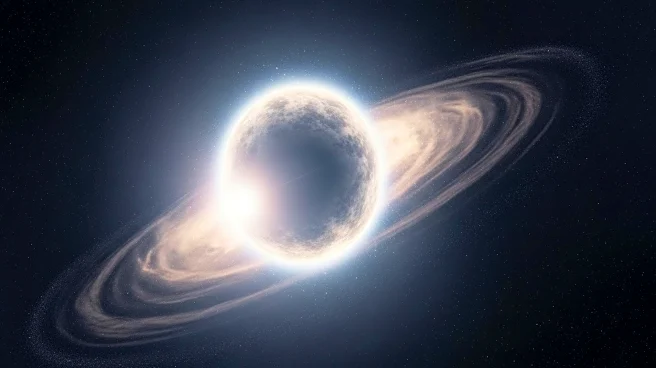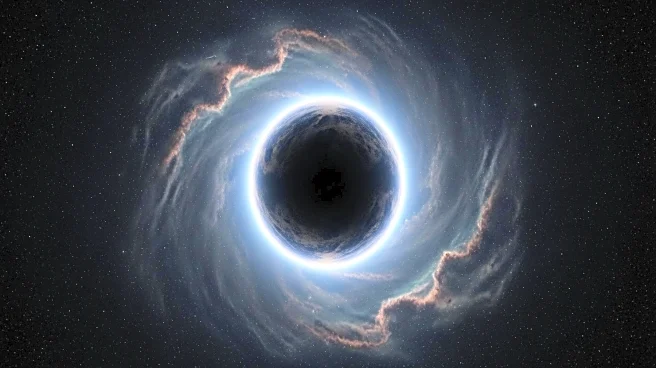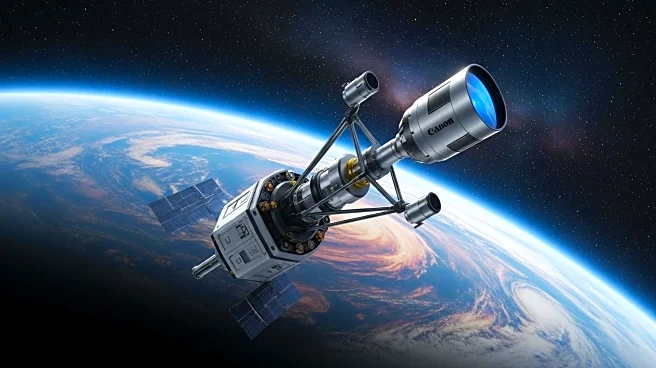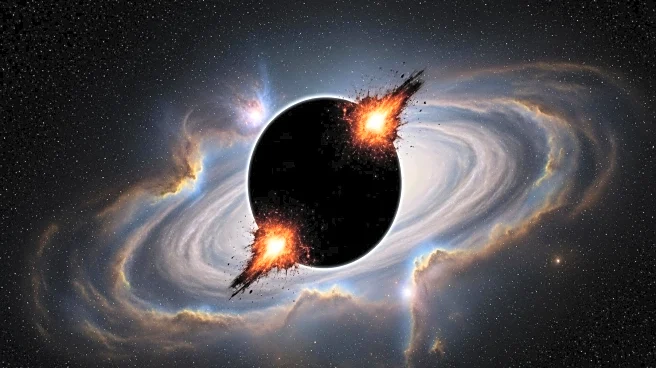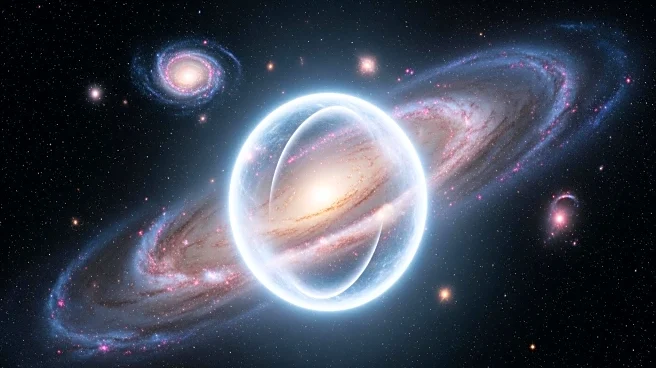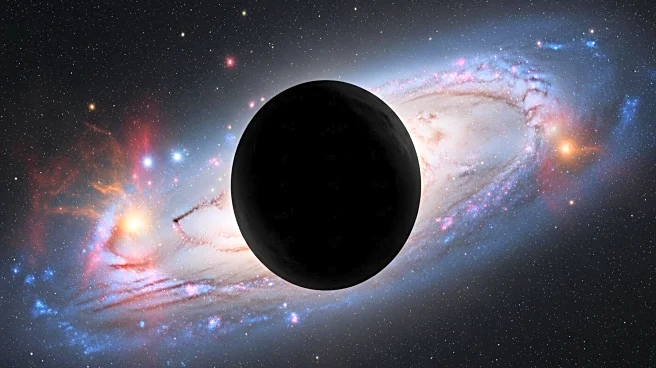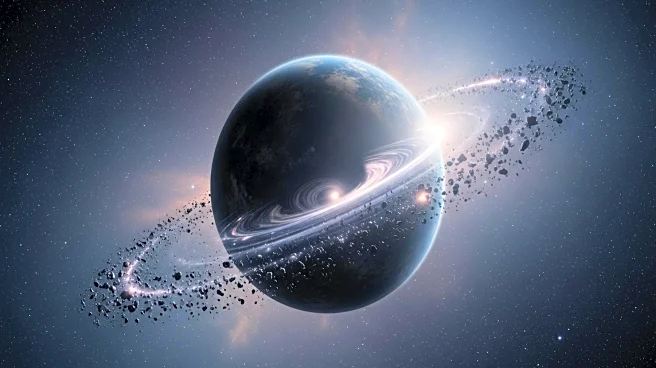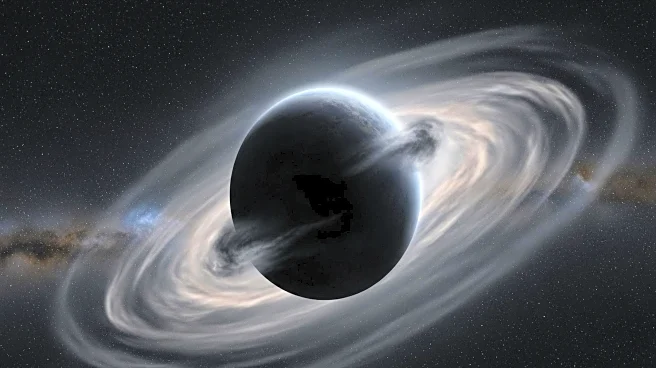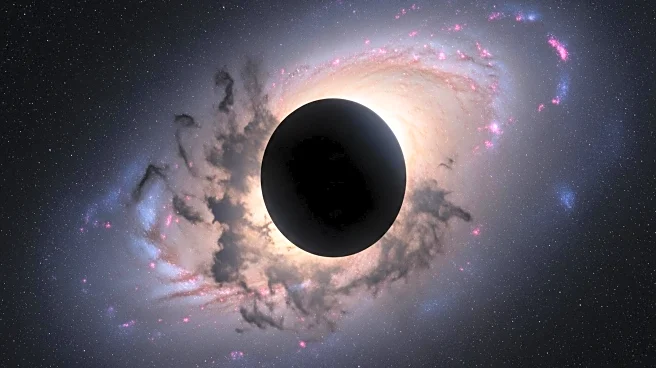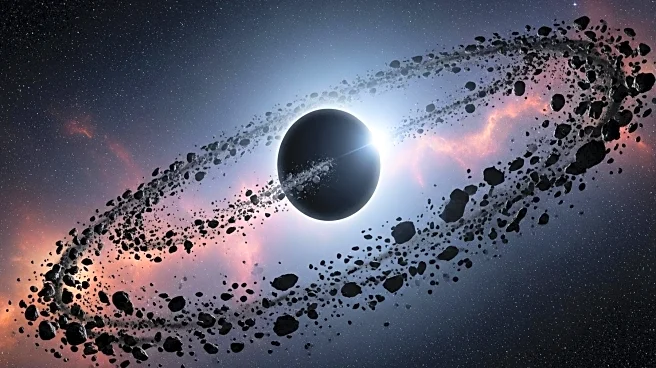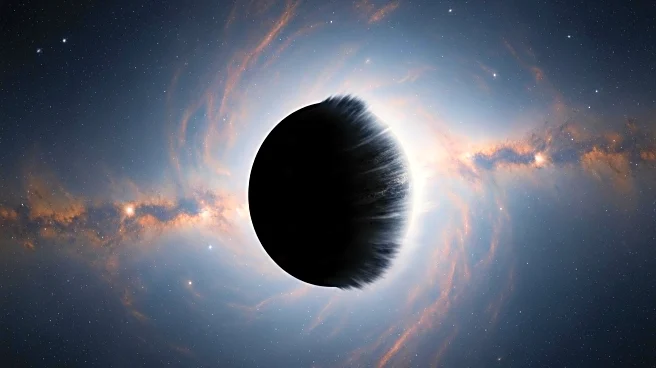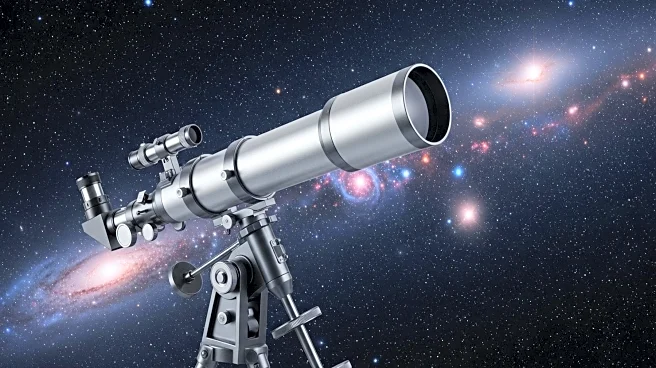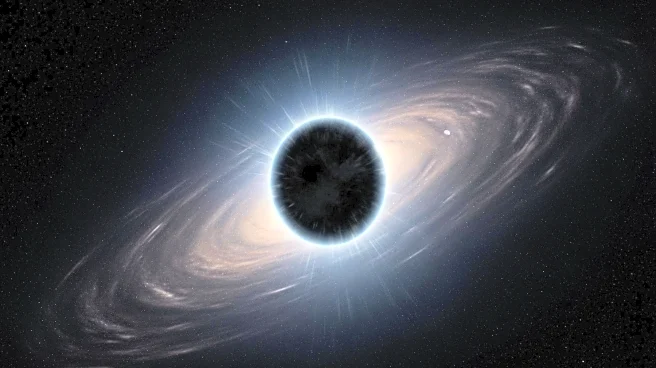What is the story about?
What's Happening?
Astronomers have observed a significant event involving a rogue planet, Cha J11070768-7626326, which is approximately five to ten times the mass of Jupiter. This planet-mass object, drifting alone in space, experienced an accretion burst—a rapid increase in the rate at which it accumulates gas and dust from its surrounding disk. This phenomenon, typically associated with young stars or brown dwarfs, was observed from April to August 2025, during which the object brightened up to six times in visible light. At its peak, the planet was accreting matter at a rate of six billion tons per second, marking the most powerful accretion event ever detected from a planet-mass body. The event was first detected by the Very Large Telescope in Chile and later observed by the James Webb Space Telescope, revealing changes in the chemistry of the surrounding disk, including the appearance of water vapor.
Why It's Important?
This discovery challenges existing notions about the formation and behavior of planet-mass objects. Traditionally, planets are considered serene and stable, but this event suggests that rogue planets can exhibit dynamic and violent growth similar to stars. The findings blur the lines between stars and planets, suggesting that free-floating planets might form similarly to stars, from collapsing gas clouds, or as ejected giant planets from their original systems. The accretion burst also provides insights into the chemical evolution of planetary disks, which could influence future planet formation. This research could lead to a reevaluation of how planets, brown dwarfs, and stars form and evolve, impacting our understanding of planetary systems.
What's Next?
Astronomers are preparing for long-term monitoring of Cha1107-7626 using advanced telescopes like the Extremely Large Telescope and the James Webb Space Telescope. These instruments will help identify more rogue planets and provide further insights into their formation and behavior. The ongoing study of accretion bursts in planet-mass objects may lead to new theories about planetary formation and the diversity of planetary systems beyond our own. Researchers aim to reconstruct the origins of rogue planets and understand the conditions under which they form.
Beyond the Headlines
The observation of accretion bursts in a planet-mass object suggests that planets can undergo similar violent growth phases as stars, potentially altering the chemical composition of their surrounding disks. This discovery could influence the settings in which future planets form, offering a new perspective on the early stages of planetary and stellar life. The findings may also prompt scientists to reconsider the processes that govern the formation and evolution of celestial bodies, leading to a deeper understanding of the universe.
AI Generated Content
Do you find this article useful?
